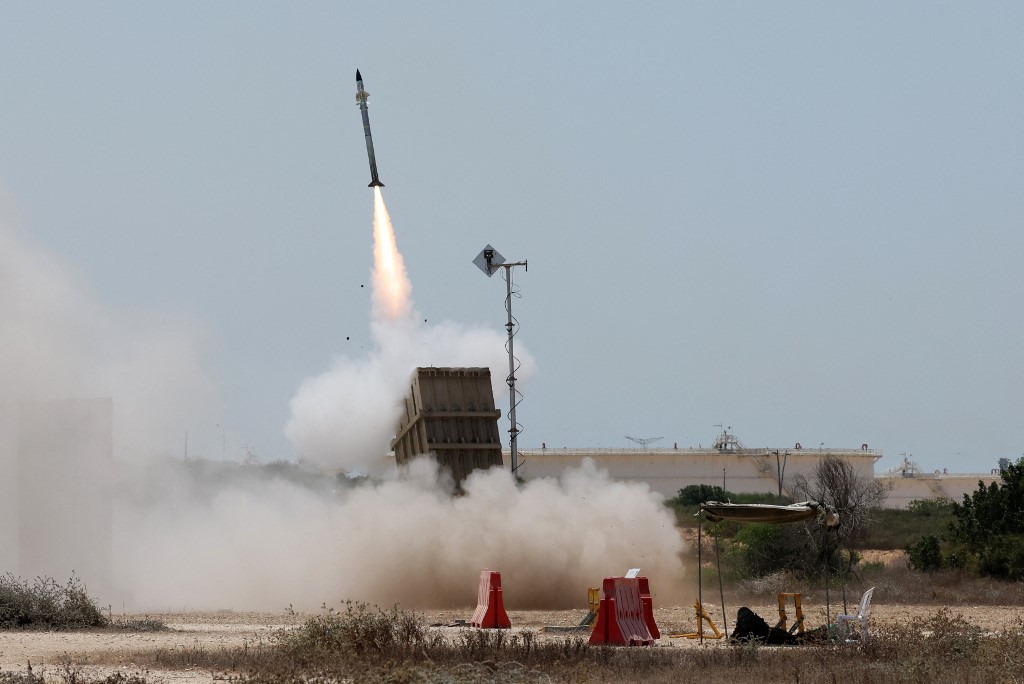Fatih Yurtsever*
The outbreak of hostilities between Iran and Israel on June 13 — sparked by Israeli airstrikes involving warplanes, drones and cruise missiles and followed by Iran’s retaliation using ballistic missiles and kamikaze drones — has drawn renewed attention to Turkey’s air defense capabilities. The conflict serves as a real-time reminder of the devastating potential of ballistic weapons and raises an urgent question: Is Turkey prepared for a similar missile threat?
Over the past two decades, Turkey has invested heavily in building a layered and indigenous air defense architecture. Yet when it comes to intercepting ballistic missiles, the country still relies heavily on NATO-supplied systems. While Ankara has made substantial progress, its defenses remain incomplete — a reflection of its aspirations for strategic autonomy and the steep challenges of developing a national missile shield from the ground up.
Turkey’s dependence on external air defense support dates back to the Cold War, when it deployed American-made Nike Hercules and Hawk systems. During the 1991 Gulf War, NATO stationed Patriot missile batteries in Turkey after Iraq launched SCUD missiles at coalition forces. These deployments revealed the urgency of acquiring a more independent and robust capability. NATO repeated similar deployments during the Syrian civil war, further pointing to the region’s growing missile threat.
In 2013 Turkey attempted to acquire a Chinese air defense system, a move that fell through due to strong objections from NATO and the threat of US sanctions. In the aftermath, Turkey accelerated its domestic development efforts and controversially purchased the Russian-made S-400 system in 2017. This decision led to US sanctions and Turkey’s removal from the F-35 joint strike fighter program, showcasing the geopolitical tightrope Ankara continues to walk between its NATO commitments and its drive for defense independence.
Ballistic missiles — especially those with medium or long-range capabilities — pose a uniquely dangerous threat due to their high speed, steep flight paths and significant payloads. The recent Iran-Israel exchanges underscore the reality that such weapons are increasingly common in regional arsenals. For Turkey, surrounded by unstable neighbors and potential adversaries, the need for a capable missile defense system is not merely strategic — it is vital.
Currently, Turkey’s defense systems can address a variety of aerial threats, but only partially cover ballistic missiles. The country has fielded the HİSAR family of air defense systems, designed to target aircraft, drones and cruise missiles within short to medium ranges. The long-range SİPER Block-I system, introduced to the inventory with a range exceeding 100 kilometers, does not yet have the capability to intercept ballistic missiles. Mobile systems such as KORKUT and GÜRZ are also operational, but they are intended for low-altitude threats like drones and helicopters.
Turkey’s most controversial missile defense acquisition to date remains the S-400 system. Although it offers some ability to intercept short and medium-range ballistic missiles, its operational use is constrained. The system is not integrated into Turkey’s national command-and-control network, known as HAKİM 100, and cannot communicate with NATO defense systems. As a result, it remains more of a political symbol than an active asset, often stored in hangars rather than deployed on Turkish soil.
Aselsan Secures $616 Million for Developing Equipment for Turkey’s ‘Steel Dome’. pic.twitter.com/RT4uR85oqJ
— International Defence Analysis (@Defence_IDA) March 30, 2025
To overcome these limitations, Turkey unveiled the Çelik Kubbe (Steel Dome) project in 2024. Designed by Turkish defense contractor Aselsan, Steel Dome envisions a fully integrated, multi-layered defense architecture covering low, medium and high altitudes. Unlike Israel’s Iron Dome system, which is optimized for short-range rocket defense, Turkey’s model aims for broader coverage. It is intended to integrate various systems, including the HİSAR family, SİPER missiles, mobile platforms like GÜRZ and radar assets linked via the HAKİM command system and the RADNET radar network. While Turkey also hopes to make this framework interoperable with NATO’s European Sky Shield Initiative, full implementation may not be achieved until the 2030s.
Two critical elements of Turkey’s future ballistic missile defense are the SİPER Block-III missile system and the TF-2000 air defense destroyer. SİPER Block-III, still under development, is expected to enter service in the late 2020s and would represent Turkey’s first domestically produced interceptor capable of targeting ballistic missiles with ranges exceeding 150 kilometers. The TF-2000 air defense destroyer project, launched in 2025, will serve as the maritime backbone of the Steel Dome system. Equipped with the advanced ÇAFRAD radar, these warships are expected to deploy SİPER Block-III missiles and enhance air and missile defense over Turkish territorial waters.
Despite these ambitions, the road ahead is riddled with challenges. Technical bottlenecks, budgetary pressures and the complexity of synchronizing equipment from various domestic and foreign suppliers into one seamless command structure all pose obstacles. Political tensions between Turkey and NATO members as well as internal debates over the role of Russian and Western systems in the country’s arsenal have further complicated development.
Meanwhile, Turkey faces a worsening security environment. Iran’s expanding missile program, the lingering threat of conflict spilling over from Syria and ongoing maritime disputes with Greece in the eastern Mediterranean all underscore the urgency of fielding a robust missile defense. A fully realized Steel Dome would not only defend Turkish airspace more effectively but also serve to reinforce NATO’s vulnerable southeastern flank.
Turkey has made notable strides in building its indigenous air defense infrastructure. However, it remains vulnerable to long-range ballistic and hypersonic missile threats. The Iran-Israel conflict has exposed the high cost of delayed preparedness. Had Turkey accelerated the development of the TF-2000 destroyer or the SİPER Block-III interceptor, its deterrence posture might look considerably stronger today. Instead, the country moves into the latter half of the decade with maturing, but still incomplete, defenses — and a narrowing window to close the gap before the next crisis hits closer to home.
* Fatih Yurtsever is a former naval officer in the Turkish Armed Forces. He uses a pseudonym due to security concerns.

